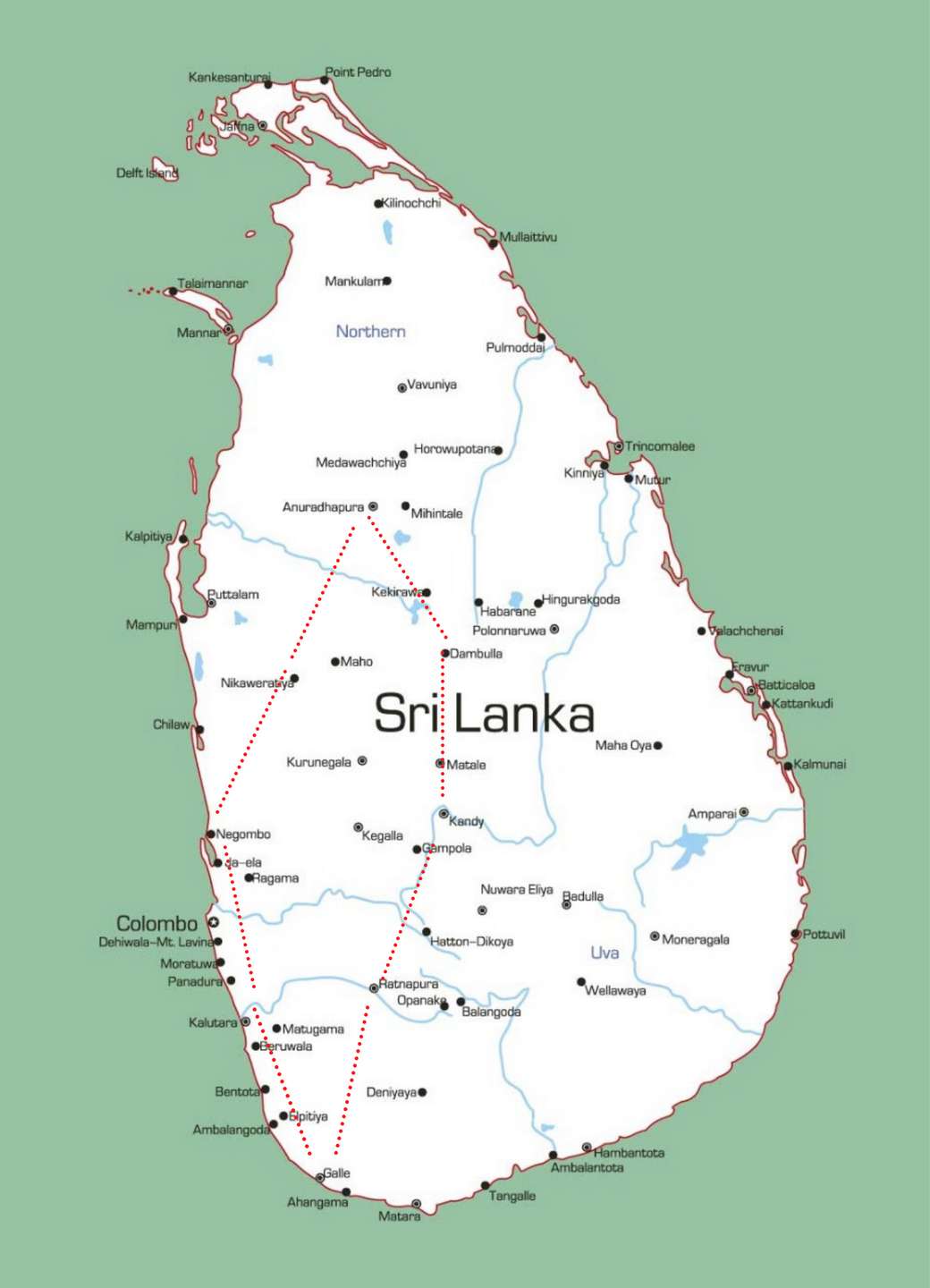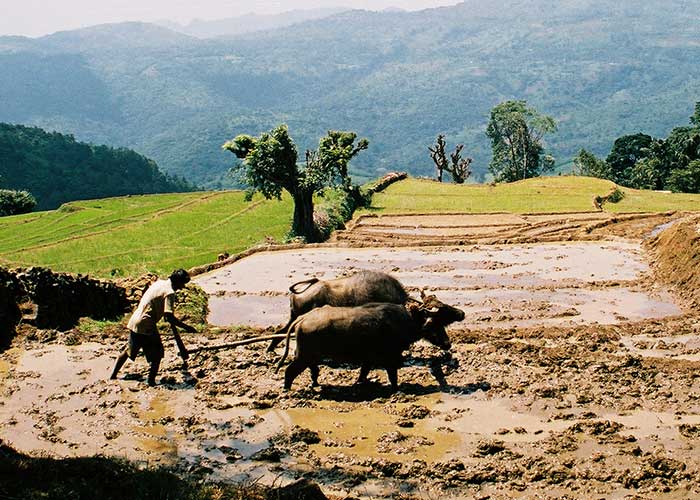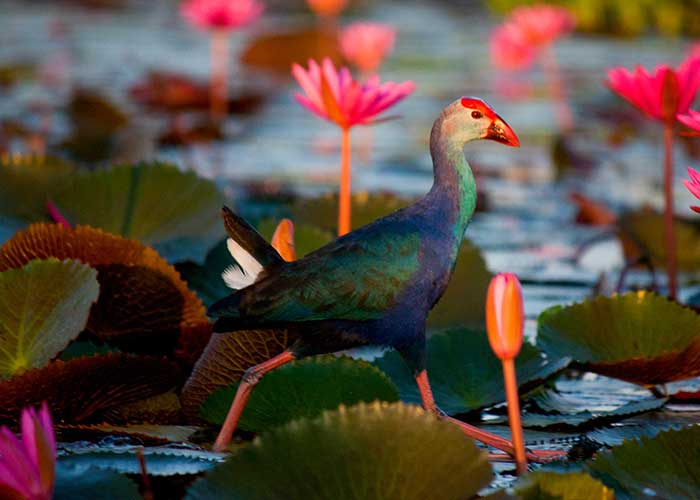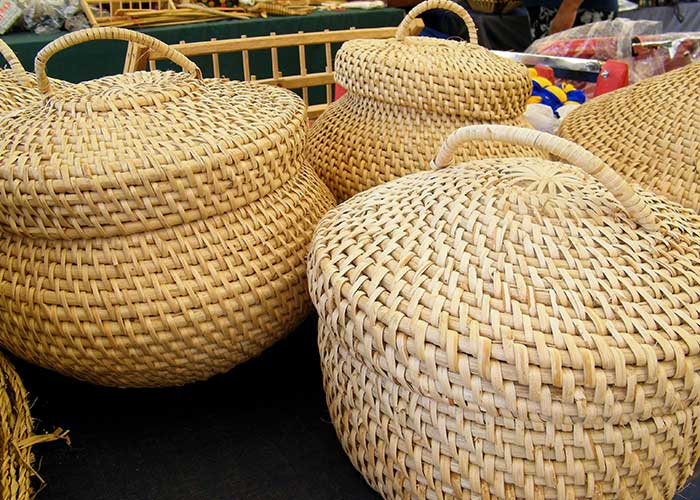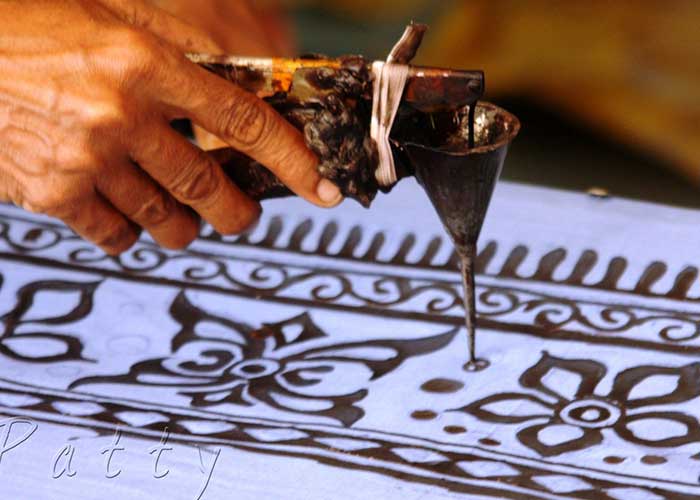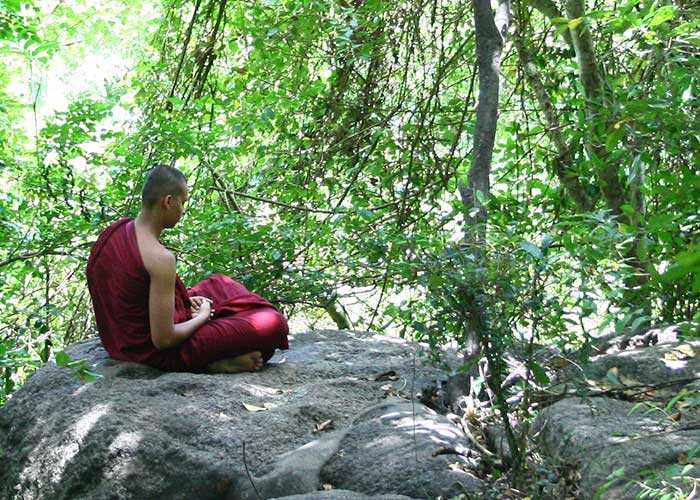Explore Sri Lanka’s Magnificent Architecture
Guided Tour | With Excursions
Negombo | Anuradhapura | Dambulla | Sigiriya | Polonnaruwa | Kandy | Galle | Colombo
Want more info?
Do you want to know when best to travel, the best places to stay and dine, the sights you shouldnt miss? Our experienced tour package designers are just a click away!
Get your travel and stay package in Sri Lanka designed to suit your time, budget and comfort requirements.
Arrival and transfer to Negombo
Arrive in Sri Lanka and transfer to the coastal town of Negombo. This is an ideal introduction to Sri Lanka with its multiethnic community and bustling Negombo fish market. Here in Negombo you find the main communities living in perfect harmony and as a result there are many Cathedrals, Buddhist temples, Hindu Temples (known as Kovils) and Mosques in proximity. Spend the evening at leisure.
Negombo to Anuradhapura
After an early breakfast transfer to Anuradhapura. Anuradhapura was Sri Lanka’s first significant civilization. Founded on the banks of the Malwathu River, it was an agricultural civilization which lasted over a thousand years. The ruins of this city are still standing and for an architectural and engineering perspective there are many insights one can gather. There are many examples of town planning, irrigation and many large constructions that rival the Egyptian pyramids. The most significant are the great Stupas which are dome shaped buildings over a hundred meters tall. Most of the architecture and design of Anuradhapura was influenced by Buddhism and one can observe many of the states and sculptures and buildings and facilities built to house thousands of monks and scholars. In the afternoon set out to explore the ruins of the old city and spend the sunset at the Ruwanweli Stupa.
Explore the ancient kingdom of Anuradhapura
After breakfast spend the day exploring the Architectural highlights of the Anuradhapura Civilization. Today you will visit the other great stupas and the various administrative buildings of the Anuradhapura era. Later in the day you will also have the chance to see some of the beautiful ponds and stonework as well. In terms of irrigational prowess, the Yodha Ela (Giant Canal) built around 459 A.D. is an engineering marvel as it has a consistent gradient of 10 cm per km through its entire 87 km length.
Anuradhapura to Dambulla
After breakfast transfer to Dambulla and visit the cave temple complex in Dambulla. The Dambulla rock temple complex which is home to a well-preserved collection of ancient Buddhist paintings and statues. The creators of Dambulla have carved out a gutter in the stone that prevents the temple inside from getting damaged. The creative work spans many centuries and the temple has been maintained under the patronage of many kings during their respective reign. After visiting Dambulla transfer to your hotel and spend the late afternoon relaxing by the pool.
Sigiriya and Optional visit to the Minneriya National Park.
Setoff early morning with a picnic breakfast to explore the 5th century ancient rock fortress of Sigiriya (meaning lion rock). This magnificent complex was built by a prince who was fleeing from the consequences of patricide. Today it is a tourist hot spot where visitors come and marvel at the royal palace complex and fortress built upon a rock that rises 200 meters above the surrounding landscape this was an ideal vantage point for the troubled prince. There are many architectural, artistic and engineering marvels to explore in Sigiriya. The Sigiriya complex consists of a royal palace and citadel consisting of an inner city and outer city with the palace is surrounded by three ramparts and two moats. Within the palace there are elaborate gardens with fountains watered by elaborate water retaining systems together with surface and sub surface hydraulic systems. One of the crowning highlights are the beautiful frescos of heavenly maidens which are painted on the western rock face about 100 meters from ground level. They are remnants of a much larger collection that covered an area nearly 140 meters long! Spend the day exploring Sigiriya and return to your hotel in the afternoon and relax by the pool. You have the option of enjoying a wildlife safari at the Minneriya National Park. Located between Habarana and Polonnaruwa, the 8,890 hectares of Minneriya National Park consists of mixed evergreen forest and scrub areas and is home to favorites such as sambar deer, leopards and elephants. However, the central feature of the park is the ancient Minneriya Tank (built in 3 rd century AD by King Mahasena). During the dry season (June to September), this tank is an incredible place to observe the elephants who come to bathe and graze, as well as the huge flocks of birds (cormorants and painted storks to name but a few) that come to fish in the shallow waters.
Visit the ancient city of Polonnaruwa
In the morning setoff to visit the ruins of the ancient city of Polonnaruwa which was the medieval capital from the eleventh to the first quarter of the thirteenth century. During the thousand-year period when Anuradhapura was the capital of the country Polonnaruwa served as a fortified outpost and the country residence of the royalty of Anuradhapura. Being far from the North Western shores which was the main entry point for the South Indian invaders, Polonnaruwa became the capital after the fall of Anuradhapura. Here too like in Anuradhapura the kings built many great reservoirs which sustained an agro based economy which in turn sustained a flourishing civilization. The Polonnaruwa site is more compact than Anuradhapura but offers a wealth of architectural jewels. Some of the key sites are the remnants of the old palace which is said to have had a thousand rooms and stood seven stories tall, it also had many religious and administrative structures and there is evidence of the Indian influence in the form of the Hindu temples that are found within the complex. The museum in Polonnaruwa is especially interesting as it had many examples of how the ancient architects and engineers built these impressive structures. Spend the day exploring Polonnaruwa and return to the hotel in the evening.
Dambulla to Kandy
After breakfast transfer to Kandy, the last Capital of the Sinhala kings. Kandy is remarkable for the natural beauty of its setting in a peaceful wooded valley overlooking a vast artificial lake. The palace buildings, shrines and the British period buildings give it a special character. With the fall of the Anuradhapura and Polonnaruwa kingdoms the capital and the royal residence moved to the hill country. The geographical location of Kandy was very in creating a natural defense strategy and city was built in a valley surrounded by three mountain ranges and encircled by the Mahaveli river. This evening you will have a chance to visit the Sacred shrine that houses the tooth relic of the buddha. It is the former royal palace and a marvelous example of Kandyan architecture. There are also some colonial structures in the close vicinity that are definitely worth a visit. In the evening return to the hotel for some rest and relaxation.
Explore the architectural highlights of Kandy
After breakfast, spend the day exploring some of the highlights of Kandyan architecture such as the three temples, Lankathilake, Gadaladeniya and Embekke which are located on the outskirts of the city. The architecture of the Kandyan Kingdom cannot be compared either in extent or magnificence to the ancient glories of Anuradhapura and Polonnaruwa. However, the Kandyan architecture has a distinct character of its own which responds to its needs of a smaller agricultural community which is more comfortable rather than luxurious. The buildings are smaller in scale and simpler in appearance and refined in detail. The buildings are mostly of timber and mud on a traditionally molded raised stone plinth. Timber doorways columns, brackets, beams and rafters were intricately carved with traditional decorative patterns. Massive overhanging roofs with lone eaves projections were double-pitched and covered with flat clay tiles. Lacquer was used for colors. Door frames and furniture were frequently embellished with finely carved ivory bone and metal. The refinement of the richly decorated components of the Kandyan period gave it its distinctive character. In the evening return to the hotel for rest and relaxation.
Kandy to Galle
After breakfast transfer to the coastal town of Galle. The Galle Fort is a city with the perfect blend of past and present, the native and the colonial. Galle Fort was first built by the Portuguese in the 16th century and then modified by the Dutch during the 17th century. The Galle Fort is one of the best-preserved examples of 17th century colonial fortifications in the world and is on the UNESCO list of world monuments. much of what visitors see of the Galle Fort is a reflection of the way Galle Fort was during the time of the Dutch.
Galle to Colombo (via Bentota)
After breakfast visit Lunuganga, the country home of the renowned architect Geoffery Bawa which is located in Bentota. This is an ideal opportunity to observe his Tropical Modernism style and take in the beautiful landscaping and views of the surrounding countryside and the scenic Dedduwa lake. After lunch at Lunuganga transfer a short distance across the Bentota river to visit the exquisite Brief Garden which was created by Bevis Bawa, a renowned landscape artist and the brother of the famous architect. Transfer to Colombo the commercial capital. This rapidly developing city has its roots in trade and commerce. It played a key role in the Island’s colonial history and post-independence time as well. There is a rich mix of architecture that extends from the Dutch period, through the British period to modern design. The country in its own way has taken many steps to preserve the colonial heritage and this can be seen especially in the old city buildings which are located close to the harbor. You will stay at the Galle Face Hotel, A colonial hotel overlooking a large public park by the sea. This is an ideal location to enjoy a few cocktails and get a feel of the development that’s taking place as it offers a view of the upcoming port city project.
Evolution of modern Sri Lankan architecture
After an early breakfast set off to visit the city home of the late great architect Geoffry Bawa. He was a prominent figure in the post-independence period and a pioneer in the Tropical Modernism style of architecture. This sanctum is preserved as it was during Mr. Bawa’s time and offers great insights to his life and work. Speaking of his work, the next stop is the current Sri Lankan parliament designed by Bawa which celebrates the architectural diversity of the country. Thereafter setoff on a brief tour that covers the architectural highlights of Colombo and enjoy lunch back at your hotel. Later in the evening as the sun sets make a short transfer to Colombo fort. As the name suggests this is the old fortification used during the Dutch Era. During the British period most of the military buildings were either altered or demolished to make way for commercial structures. This walk down ‘memory lane’ offers a unique opportunity to study the thinking and planning behind the old city of Colombo. End the evening with drinks at the Grand Oriental hotel overlooking the Colombo Harbor.
Departure
Today, transfer back to Colombo Airport for your onward flight.
















